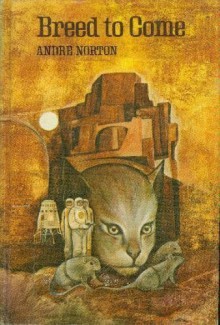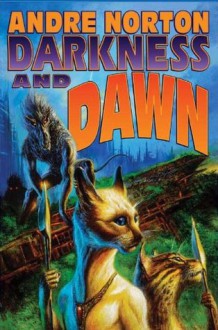
Furtig is one of the People (cat people), a descendant of Gammage. Gammage was physically different - his fur was sparser and his fingers longer. He also believed that the tools and knowledge left behind by the Demons (human beings) could be useful. It was he who developed metal claws that allowed the People to more effectively hunt, as well as fight against the Barkers, Tuskers, and Rattons. When Furtig fails his Trial and chance to secure a mate, he opts to leave his tribe and go to Gammage, who is rumored to somehow still be alive and seeking to unite the People and even ally with the Barkers and Tuskers against a common enemy...the Demons. The Demons disappeared or died out long ago, after killing many of the People in their madness. Could they really be returning?
I first read this when I was in the 5th grade. We'd been given an assignment to read a certain number of science fiction books, and at the time I was firmly a fantasy reader and felt that science fiction was not for me. Then I discovered that Andre Norton had written science fiction starring cats, and I changed my mind.
I don't know that I can really call this a reread. I know I read it before, but I didn't feel one bit of recognition during this "reread," to the point that I might as well have been reading it for the first time.
Norton's style was a bit stiffer than I recalled, and I didn't really settle into the story until after Furtig met Foskatt and Gammage. I enjoyed Furtig's encounters with "Demon" technology - sometimes it was easy to figure out what sort of device he was using, and sometimes I couldn't be sure. Furtig's discovery that he had slight psychic powers was a bit much, but they thankfully weren't overused.
Norton's vision of humanity in this was...not exactly flattering. We basically screwed up multiple times, and then made things worse when we tried to fix our mistakes. The overall message: technology is nice and all, but go too far and you'll kill yourself. It struck me as being both simplistic and depressing,
especially considering how Norton hammered it home at the end.
The whole setup with the People, Barkers, Tuskers, and Rattons, made sapient by the mistakes that ultimately killed humanity, was interesting enough. And yeah, I can definitely understand why animal-loving 5th grade me latched onto this and Norton's other cat-focused books. However, in my reread one thing that really bothered me was how hard Norton leaned on rat stereotypes. The Barkers and Tuskers were allowed to be more complex - they could be reasoned with and potentially become allies to the People. The Rattons, on the other hand, were just plain evil, resorting to torture and horrible traps. It struck me as lazy, compared to the way the Barkers and Tuskers were depicted.
All in all, not a bad reread, but a bit more of a downer than I expected.
(Original review posted on A Library Girl's Familiar Diversions.)

 Log in with Facebook
Log in with Facebook 








